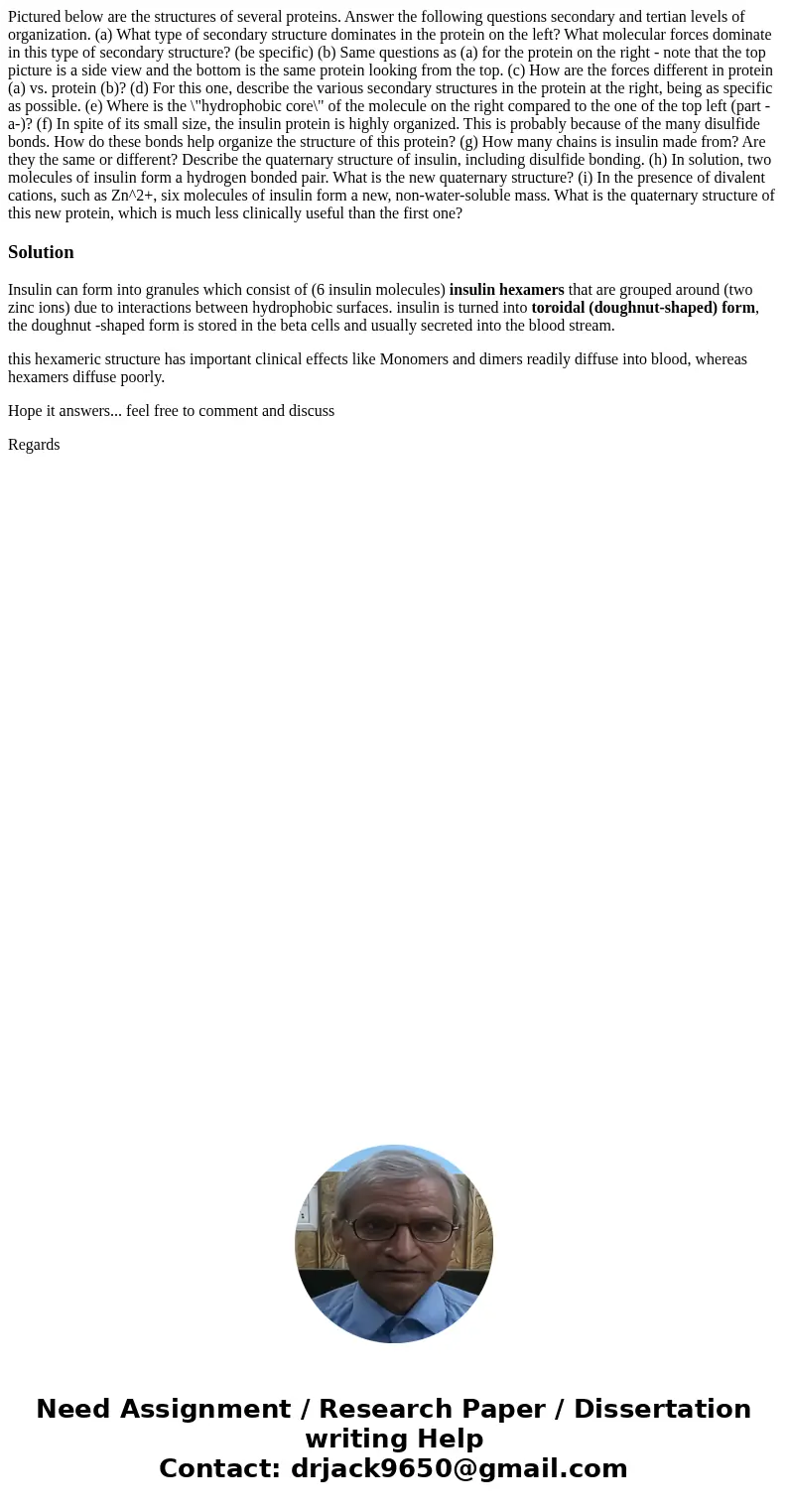Pictured below are the structures of several proteins Answer
Pictured below are the structures of several proteins. Answer the following questions secondary and tertian levels of organization. (a) What type of secondary structure dominates in the protein on the left? What molecular forces dominate in this type of secondary structure? (be specific) (b) Same questions as (a) for the protein on the right - note that the top picture is a side view and the bottom is the same protein looking from the top. (c) How are the forces different in protein (a) vs. protein (b)? (d) For this one, describe the various secondary structures in the protein at the right, being as specific as possible. (e) Where is the \"hydrophobic core\" of the molecule on the right compared to the one of the top left (part -a-)? (f) In spite of its small size, the insulin protein is highly organized. This is probably because of the many disulfide bonds. How do these bonds help organize the structure of this protein? (g) How many chains is insulin made from? Are they the same or different? Describe the quaternary structure of insulin, including disulfide bonding. (h) In solution, two molecules of insulin form a hydrogen bonded pair. What is the new quaternary structure? (i) In the presence of divalent cations, such as Zn^2+, six molecules of insulin form a new, non-water-soluble mass. What is the quaternary structure of this new protein, which is much less clinically useful than the first one?
Solution
Insulin can form into granules which consist of (6 insulin molecules) insulin hexamers that are grouped around (two zinc ions) due to interactions between hydrophobic surfaces. insulin is turned into toroidal (doughnut-shaped) form, the doughnut -shaped form is stored in the beta cells and usually secreted into the blood stream.
this hexameric structure has important clinical effects like Monomers and dimers readily diffuse into blood, whereas hexamers diffuse poorly.
Hope it answers... feel free to comment and discuss
Regards

 Homework Sourse
Homework Sourse